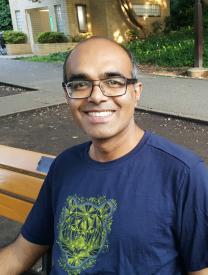I am interested in how natural systems manipulate and process information, producing new forms of self-organization.
As a theoretical physicist, I pursue questions about the fundamental nature of space and time. I have worked on the the apparent loss of quantum information in the presence of black holes and the origin of entropy and thermodynamics in gravitating systems. I have discussed how the familiar smooth structure of space-time can emerge as a long-distance effective description of more complex underlying physical constructs. I have shown how some dimensions of space can be regarded as emergent, arising from the quantum entanglement and information structure of an underlying lower-dimensional theory.
As a biophysicist I pursue these questions primarily in neuroscience. I think about the brain as a statistical computational device and seek to uncover the principles that underlie the organization of neural circuits across scales from cells to the whole brain. I have worked on systems in the brain that support many different functions: vision, audition, olfaction, spatial cognition, motor control and decision making. Applying lessons about adaptive molecular sensing from the olfactory system, I have also written about the functional organization of the adaptive immune system in vertebrates and bacteria (CRISPR). Visit our Lab Website for more details.
Finally, I have written on problems in statistical inference and machine learning, and in particular on “Occam’s Razor”, i.e., the tradeoff between simplicity and accuracy in quantitative models. I am interested in this question because all scientific theories involve fitting models to data, and there is a fundamental tradeoff between the complexity of models and their ability to generalize correctly to new situations. This tradeoff influences how scientists infer models of the world, how machines learn the structure in data, and how living things from the scale of single cells to entire organisms with brains adapt to their environment over timescales from milliseconds to evolutionary time.
Ph.D. in Theoretical Physics from Princeton University
M.S. in Computer Science from M.I.T.
B.S. degrees in Physics and Computer Science from M.I.T.
High Energy Physics, String Theory, Biophysics, Neuroscience
String theory
Biophysics
Balasubramanian V, Berry MJ, Kimber D (2001) Metabolically Efficient Information Processing. Neural Computation, Vol. 13, No.4 299-816. PMID:11255570
Koch K, McLean J; Segev R, Freed MA, Berry MJ II, Balasubramanian V, Sterling P (2006) How much the eye tells the brain. Curr Biol 16:1428-1434. PMCID:PMC1564115
Ratliff CP, Borghuis BG, Kao YH, Sterling P and Balasubramanian V (2010). Retina is structured to process an excess of darkness in natural scenes. PNAS 2010 107 (40) 17368-17373. PMCID: PMC2951394.
Perge J, Niven JE, Mugnaini E, Balasubramanian V, and Sterling P (2012). Why do axons differ in caliber? J. Neuroscience 32(2):626-638. PMCID: PMC3571697.
Wei, X-X, Prentice J, and Balasubramanian V (2015). A principle of economy predicts the functional architecture of grid cells. eLife 4 (2015): e08362. PMCID: PMC4616244.
Keinath, A. T., Epstein, R. A., & Balasubramanian, V. (2018). Environmental deformations dynamically shift the grid cell spatial metric. Elife, 7, e38169. PMCID: PMC6203432

